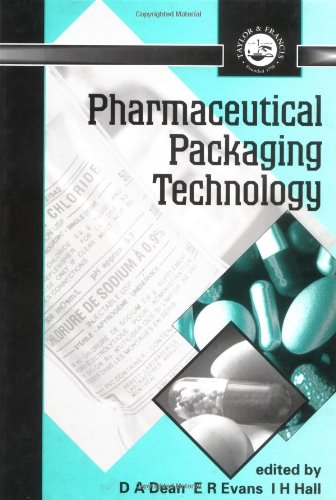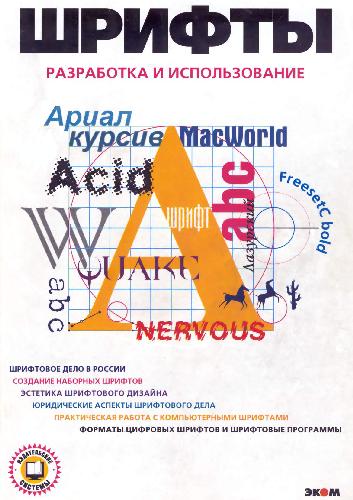D A Dean0748404406, 9780748404407, 9780203301814
Table of contents :
BOOK COVER……Page 1
HALF-TITLE……Page 2
TITLE……Page 4
COPYRIGHT……Page 5
CONTENTS……Page 6
CONTRIBUTORS……Page 8
PREFACE……Page 9
Integrity……Page 11
Route or mode of administration……Page 12
The pack……Page 13
Identification/information……Page 14
Protection……Page 15
Shock–impact……Page 16
Puncture……Page 17
Temperature……Page 18
Moisture……Page 19
The atmosphere and atmospheric gases……Page 20
Sunlight/light……Page 21
Contamination arising from physical actions……Page 22
Avoidance of electrostatic build-up……Page 23
EXAMPLE 2. IV SOLUTIONS……Page 24
Tamper resistance and adulteration……Page 25
MOULDS AND FUNGI……Page 26
Heat and irradiation……Page 27
Chemical hazards and compatibility……Page 28
Environmental issues……Page 29
Conclusions……Page 32
Marketing and sales……Page 34
Production engineering, maintenance and machinery purchasing……Page 35
Quality control and quality assurance, and specifications……Page 36
Transportation—direction and control……Page 37
Product and pack development……Page 38
Feasibility or investigational tests……Page 39
Packaging and stability (the formal estimation of shelf life)……Page 40
Example of use of incorrect material and lack of initial specification detail……Page 42
Shelf life……Page 43
Example……Page 44
Performance specifications……Page 47
Some pack assembly features……Page 48
Changes to product and pack (after initial launch)……Page 49
Likely conclusions……Page 50
Likely conclusions……Page 51
The expanding role of the pack (e.g. where pack acts as an administration aid or is used in a device)……Page 52
Some historical device-oriented products……Page 54
Closures……Page 55
Conclusion……Page 56
Examples of tests for specific materials……Page 59
Definition of the pack……Page 60
Incorporating a device into the pack……Page 61
Regulatory authorities—background……Page 62
Decentralised system (mutual recognition)……Page 64
Centralised system……Page 65
Product licence applications—data requirements on the package……Page 66
Notice to applicants……Page 67
MAA application section IIC3—control of starting materials……Page 68
Resin……Page 69
MAA application section IIF2—stability……Page 70
Expert reports……Page 71
FDA packaging guideline……Page 72
Packaging for clinical trials in the USA……Page 73
Pharmacopoeias……Page 74
Plastic material in contact with food (90/128 and amendments)……Page 75
The SmPC……Page 76
Leaflets……Page 78
Packaging waste……Page 79
Ozone layer depletion……Page 80
Classification, packaging and labelling of hazardous materials……Page 81
Summary……Page 82
Quality—a philosophy……Page 83
Quality of conformance……Page 84
Material specifications and quality standards……Page 85
The component specification……Page 86
Procedures/specification……Page 87
Identification……Page 88
MOULDED GLASS CONTAINERS……Page 90
GO/NO GO GAUGES……Page 91
Functional/performance tests……Page 92
Defect classifications……Page 93
Records……Page 94
Sampling……Page 95
Fixed percentage/number……Page 97
Sample size……Page 98
The binomial distribution……Page 100
The Poisson distribution……Page 101
New project with a new supplier……Page 104
Quality capability……Page 105
Manufacture and qualification controls……Page 106
Process controls……Page 107
Finished product control……Page 109
Validation as part of packaging quality……Page 110
Conclusion……Page 111
Technical references……Page 114
Sources of cellulose fibre……Page 116
Bleaching……Page 117
Mixer stage……Page 118
Additives……Page 119
Fourdrinier system……Page 120
Machine conversion into board……Page 121
Millboard……Page 122
Strawboards (lined or unlined)……Page 123
Paper and board merchandising……Page 124
Labels and labelling……Page 125
Label fundamentals……Page 126
Types of paper labels……Page 127
Problems of curl……Page 128
Delayed action labels……Page 129
Pressure sensitive labels (created by RS Avery 1935)……Page 130
Leaflets……Page 131
Choice of design……Page 132
Pre-folding and gluing……Page 133
Automatic……Page 134
Contact printing techniques……Page 135
On-line or off-line printing?……Page 136
Corrugated fibreboard……Page 137
Manufacture of corrugated and solid-board cases……Page 138
Closing of cases……Page 139
Composite containers……Page 141
The security environment in pharmaceuticals……Page 142
Adulteration or tampering……Page 143
Producer liability……Page 144
Project objectives……Page 145
Key features……Page 146
The adhesion system……Page 147
Security in the packaging operations……Page 148
Warehousing codes, e.g. EAN 128 or traded unit outer codes……Page 150
Security codes……Page 151
Conclusions……Page 152
Appendix 5.2: General tests for paper and board……Page 153
Appendix 5.3: Specific tests for cartons……Page 155
Appendix 5.4: Specific tests for corrugated……Page 156
Introduction……Page 157
Composition of glass and types……Page 158
Properties……Page 159
Blown glass……Page 161
Annealing……Page 162
Vello process……Page 163
Design and decoration……Page 164
Strength……Page 168
Consumer convenience……Page 169
Design protection—registration and patents……Page 170
Quality control and quality assurance……Page 171
Bottles and production lines……Page 173
Filling……Page 174
Closuring……Page 176
Labelling……Page 177
Warehousing……Page 178
Tubular glass containers……Page 179
Vials……Page 180
Cartridge tubes, disposable syringes……Page 181
Closures, caps, seals and stoppers……Page 182
Heterogeneous liners……Page 183
Screw closures……Page 184
Pitch……Page 185
Closuring diameter—relationship with seal efficiency……Page 186
Clinching, crimping, swaging, spinning or rolling……Page 187
Intravenous solutions, multidose vials……Page 188
Summary……Page 189
Terms not involving fractures or cracks……Page 190
Annealing test……Page 192
Notes……Page 193
References……Page 194
Linear……Page 195
Thermoset polymers……Page 196
Phenol formaldehyde (originally Bakelite) (PF)……Page 197
The acrylics……Page 198
Ethylene vinyl alcohol copolymer (EVAL or EVOH)……Page 199
Ionomers (trade name Surlyn)……Page 200
The nylons (polyamides) (PA)……Page 201
Low density polyethylene (LDPE)……Page 202
Polypropylene (PP)……Page 203
Poly ethersulph one……Page 204
Polyvinyl acetate (PVA)……Page 205
Rubber hydrochloride (Pliofilm—trade name)……Page 206
Synthetic rubbers (thermoplastic elastomers, TPE)……Page 207
Melt flow index (MFI)……Page 208
Appearance—optical properties……Page 209
Flexural properties (flexural strength)……Page 210
Hardness……Page 211
Brittleness temperature……Page 212
Water absorption……Page 213
Regulatory clearance……Page 214
Symmetry and cohesion energy……Page 215
Organic vapour permeation……Page 216
Plasticisers……Page 217
Stabilisers……Page 218
Colourants……Page 219
Extenders……Page 220
Residues in plastics……Page 221
Detection of constituents in plastics……Page 222
Film and sheet forms……Page 223
Injection moulding……Page 224
Extrusion blow moulding……Page 226
Thermoforming and blister (bubble) packs……Page 227
Sterilisation of plastics……Page 228
Gaseous sterilisation—ethylene oxide……Page 229
Aseptic processing and preservation……Page 230
Possible disadvantages……Page 231
Setting the specification……Page 232
Injection moulding……Page 234
Extrusion and injection stretch blow moulding……Page 235
References……Page 236
Packaging aspects……Page 239
Process of manufacture……Page 240
Materials and their properties……Page 241
Plastic grades……Page 242
Converter, i.e. laminate, film, bottle manufacturer……Page 243
Stage 3— product/pack compatibility and investigational testing……Page 244
Stage 4— formal product—pack stability tests……Page 245
Additional discussion……Page 246
Closure efficiency……Page 247
Use and misuse by the patient……Page 248
Panelling or cavitation……Page 249
Pretreatments for printing (and labelling)……Page 250
Conclusion……Page 251
Infusions and injections……Page 252
Appendix 8.2: Programme evaluation example……Page 253
France (Pharmacopoeia Francaise Xth edn 1982)……Page 254
Appendix 8.5: Bibliography……Page 255
Appendix 8.7: The plastics industry and GMP including traceability……Page 256
Appendix 8.8: Risk versus intensity ,of testing……Page 257
The elderly patient……Page 258
Support documentation for company and regulatory clearance (of products, packs and devices)……Page 259
Appendix 8.10: Other articles by author……Page 260
Gamma irradiation……Page 261
Summary—plastics and pharmaceutical packaging……Page 262
Absorption and adsorption of preservatives……Page 263
Extractives and general compendial tests……Page 264
Packaging material (primary or immediate packaging)……Page 265
Appendix 8.14: Summary of ICH guidelines on stability and possible influences on the ‘pack’……Page 266
Appendix 8.15: Future polymers for pharmaceuticals……Page 267
Shrink wrapping……Page 268
Oriented polypropylene……Page 269
Shrink terminology……Page 270
Stretch bundling……Page 271
Combination materials covering flexible and rigid applications (or multilayer materials)……Page 272
Printing processes……Page 273
Regenerated cellulose film (RCF) (Cellophane, Rayophane, Diophane, etc.)……Page 274
Films and coatings based on plastics……Page 275
Protective properties……Page 276
The polyolefins……Page 277
Polystyrene (PS, density 1.05)……Page 278
Polyacrylonitrile (PAN, trade name—Barex)……Page 279
Lacquers and waxes……Page 280
Extrusion coatings……Page 281
Vacuumised treatment, e.g. metallisation……Page 282
Foil strength……Page 283
Adhesives—traditional……Page 284
Heat sealing—peelable, semi-permanent, permanent……Page 287
Lamination selection……Page 288
Other points……Page 289
Metallisation……Page 291
Silicon oxide (SiOx) coated materials (thickness 1500–3000 Å)……Page 292
Appendix 9.1: Packing material specification……Page 293
Introduction……Page 295
Manufacture of tinplate……Page 296
Specification of steel and tinplate……Page 297
Can enamels and lacquers……Page 298
Decorating metal containers……Page 299
Offset lithography……Page 300
Types of metal containers……Page 301
Deep drawn containers……Page 302
Rigid impact extruded aluminium containers……Page 303
Closures……Page 304
Impact extruded collapsible metal tubes……Page 305
Closures and closuring……Page 306
Built-up containers……Page 307
Container fabrication—the open-top can……Page 308
Talcum powder containers……Page 309
Liquid containers……Page 310
Shipping containers……Page 312
Components and types of aerosols……Page 313
Filling and packaging……Page 314
Conclusion……Page 315
The properties of aluminium foil……Page 316
Supported foil……Page 317
Pinholes and pinhole theory……Page 318
Cold forming……Page 319
Conclusions……Page 320
Introduction……Page 321
Closure evaluation and performance against egress and ingress for reclosables……Page 322
Closure assessment and control: some general factors……Page 323
Environment……Page 324
Initial approach to closure assessment and control……Page 325
Atmospheric pressure……Page 326
Combined pressure and vacuum tests……Page 327
Ingress to product……Page 328
Other tests and considerations……Page 329
Thermoplastic-based closures……Page 331
Wadless closure systems……Page 332
Torque……Page 333
Thread engagement—turn to release……Page 334
Multi-start versus single start threading……Page 335
Metal vacuum seals……Page 336
Conclusions—reclosables……Page 337
Metal……Page 338
Impact extruded aluminium cans……Page 339
Reel factors (or sheet factors)……Page 340
Heating methods and cooling……Page 341
Other factors……Page 342
Terminology associated with adhesion……Page 343
Methods of adhesive application……Page 344
Observation of visual defects, e.g. pinholes, capillaries…….Page 345
Crack, pinhole, capillary detection……Page 346
Tamper-evidence and tamper-resistance……Page 347
Child-resistance, tamper-evidence/resistance and OPD (original pack dispensing)……Page 348
Closure systems involving product delivery or administration……Page 349
Intravenous (IV) solutions……Page 350
Appendix 11.2: References—sterile products……Page 351
Appendix 11.4: Closure systems and stress cracking……Page 352
Pressure sensitive tapes……Page 353
Appendix 11.7: US finishes……Page 354
Introduction……Page 355
The history of injectables……Page 356
Moist heat……Page 357
Packaging materials……Page 358
Rubber and elastomers……Page 359
Natural rubber……Page 360
Cure ingredients……Page 361
Plasticisers……Page 362
Ampoules and vials……Page 363
Lyophilised products……Page 364
Two-component drug system……Page 366
Compatibility with the drug……Page 367
Seal integrity……Page 368
Self-sealing and fragmentation……Page 369
Ready to sterilise (RTS) closures……Page 370
Conclusions……Page 371
References……Page 372
Basic equipment principles……Page 373
Feeding and filling……Page 374
Lidding and heat sealing……Page 375
Curl of trays (particularly relevant with hard foil)……Page 376
Machine summary……Page 377
Protection against moisture……Page 378
Blister materials—trays and lids……Page 379
Blister lidding materials (push-through)……Page 380
Cold forming (or mechanically formed blisters)……Page 381
Costs……Page 382
Controlled or monitored dosage systems for the elderly……Page 383
Strip packaging process……Page 384
Strip designs……Page 385
Conclusions……Page 386
Pinholes and foil (aluminium)……Page 387
Tamper-evidence, tamper-resistance and child-resistance……Page 388
Semi-automatic blister packaging equipment……Page 389
Materials……Page 390
September 23rd—24th 1998……Page 392
Introduction……Page 395
Bringing the materials to the packaging line……Page 396
Packaging line services……Page 397
Gas……Page 398
Container-based filling……Page 399
Form fill and seal packaging systems……Page 400
Sachets……Page 401
Ampoules……Page 402
Closing the package……Page 403
Collation, casing and palletisation……Page 404
Operators and training……Page 405
Physical or mechanical damage……Page 408
Hazards the product creates……Page 409
Nature of primary pack……Page 410
Environmental changes during storage, handling and distribution……Page 411
Palletised and non-palletised loads……Page 412
Pallet types……Page 413
Incorporation of low slip materials……Page 414
Height stacked and stack configuration……Page 415
Containerisation……Page 416
Storage and handling of packaging materials and components……Page 417
Costs……Page 418
UN certification……Page 419
Conclusions……Page 420
Introduction……Page 421
Key……Page 422
Print terminology……Page 423
Decoration/printing—general processes……Page 424
Graphic reproduction (‘origination’)……Page 425
Line artwork—multicolour print……Page 426
Desktop publishing (DTP) and digital artwork and reproduction (DAR), i.e. preprint to press (PTP) systems…….Page 427
PRECIPITATION……Page 428
Printing machine terminology……Page 429
Flexographic……Page 430
Hot die stamping and gold blocking……Page 431
Planographic……Page 432
Dry offset lithography……Page 433
Intaglio……Page 434
Letraset……Page 435
Embossing and debossing……Page 436
Vacuum metallising……Page 437
Security systems……Page 438
Print adhesion……Page 439
Special considerations—pharmaceutical and cosmetics……Page 440
Printing and printing inks……Page 441
Conclusions……Page 442
Introduction……Page 444
Product trends influencing pack trends……Page 445
Other medicinal products which influence packaging trends……Page 446
Films, foils and laminates, including coextrusions and metallisation……Page 447
Faster lines, pregauging on-line or pregauged components and tighter specifications……Page 448
Child-resistance……Page 449
In-house printing……Page 450
Controlled dosage systems (also called monitored dosage systems)……Page 451
Conclusions……Page 452
Appendix 17.1: Packaging and medical devices……Page 453
INDEX……Page 454






Reviews
There are no reviews yet.